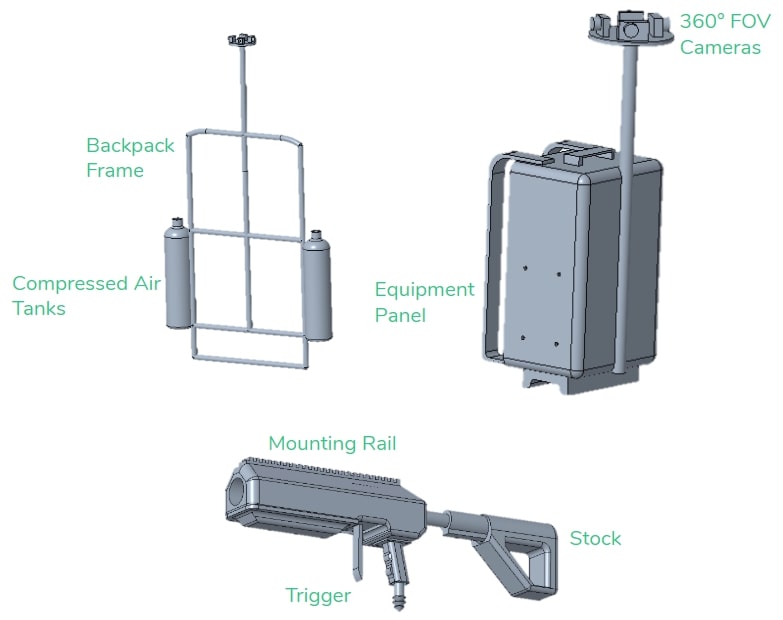Recreational drones are rapidly increasing in popularity during the 21st century. There have been about 10 million drones sold around the world in 2018. Drones equipped with cameras or weapons pose a threat to restricted areas such as prisons. Populated areas and government buildings are also at risk from possible drone attacks. Northrop Grumman is sponsoring our team to develop a product that can detect and disable unauthorized drones and secure an airspace. The target consumer of this device is law enforcement and security teams, so they can disable drones that are flying in restricted areas. The device consists of an automatic detection system, a weighted net launcher and a backpack to house equipment. The detection system automatically detects drones with cameras and alerts users of a potential hazard. These cameras distinguish between drones and other objects using a trained program to prevent false alerts. Cameras were mounted above the pack to provide a 360-degree view of the area around the user. A net is launched using high-pressure air to neutralize and potentially capture hostile drones. This launcher is portable and the size of a rifle. The backpack has air tanks and computer systems stored inside, where air hoses connect the backpack to the launcher. Positioning the air tanks and other components in the pack allows the user to carry necessary components in one place. This design provides comfort to the user. The device has an expected assembly time of five minutes. If a drone comes within thirty feet of the user, the detection system will alert of the approaching danger. The overall system is safe for the user and environment and complies with legal regulations.
Mounted three-camera setup provides full 360° viewing coverage of the airspace. Object recognition software is used to recognize drones. When a drone is detected, the Raspberry Pi will produce a noise to alert the user to take action.
Backpack-mounted air tank delivers pressurized air through a hose to the gun. When the trigger is pulled, a weighted net is launched to capture the drone.
Although we cannot implement this feature in our design due to FCC regulations, users with the required clearance will be able to use the device with a radio frequency jammer to block the signal from the drone controller to the drone. This can either cause drone shutoff or hovering, making the drone capture process easier.
We are in the final testing phase of all components of our device. As we notice room for improvement, we plan to do everything we can to meet and exceed our original targets.
Click here for a timeline of our project's progress.
If we were to continue the project after Design Day, we would work towards getting certified to implement the RF jamming feature of our device.


Mechanical Engineering
Trevor is a senior graduating in Spring 2019. He plans to work after graduation.

Mechanical Engineering
Ryan is a senior graduating in Spring 2019. He plans to work after graduation.

Mechanical Engineering
Dylan is a senior graduating in Spring 2019. He plans to work after graduation.

Computer Engineering
Quentin is a senior graduating in Spring 2019. He plans to pursue a career in software engineering after graduation.

Electrical Engineering
Taylor is a senior graduating in Spring 2019. He plans to pursue a Master's Degree at FSU after graduation .
Trevor Stade | tms15c@my.fsu.edu
Ryan Cziko | rhc15b@my.fsu.edu
Dylan Macaulay | dsm13d@my.fsu.edu
Quentin Lewis | quentin1.lewis@famu.edu
Taylor Stamm | tts13b@my.fsu.edu